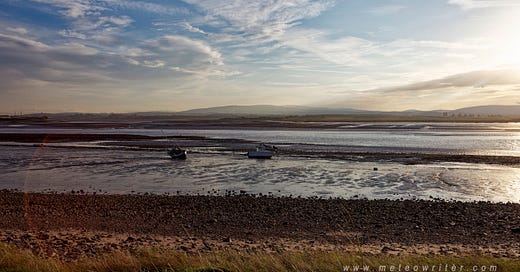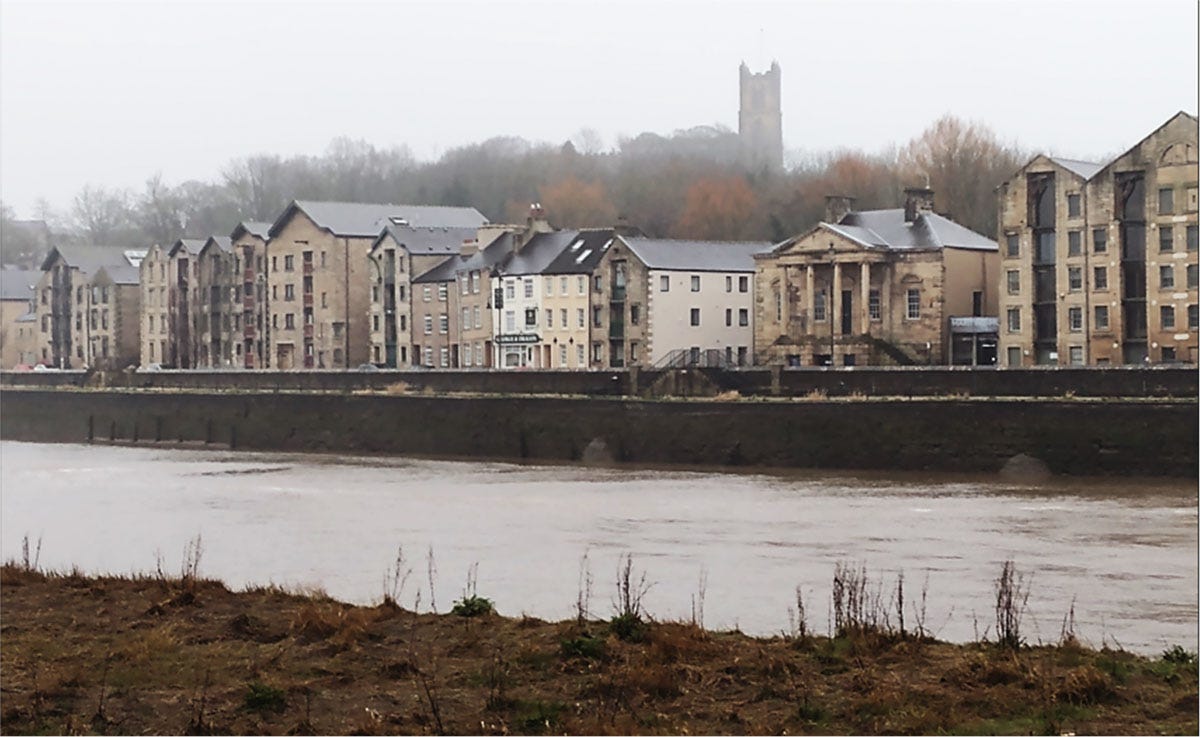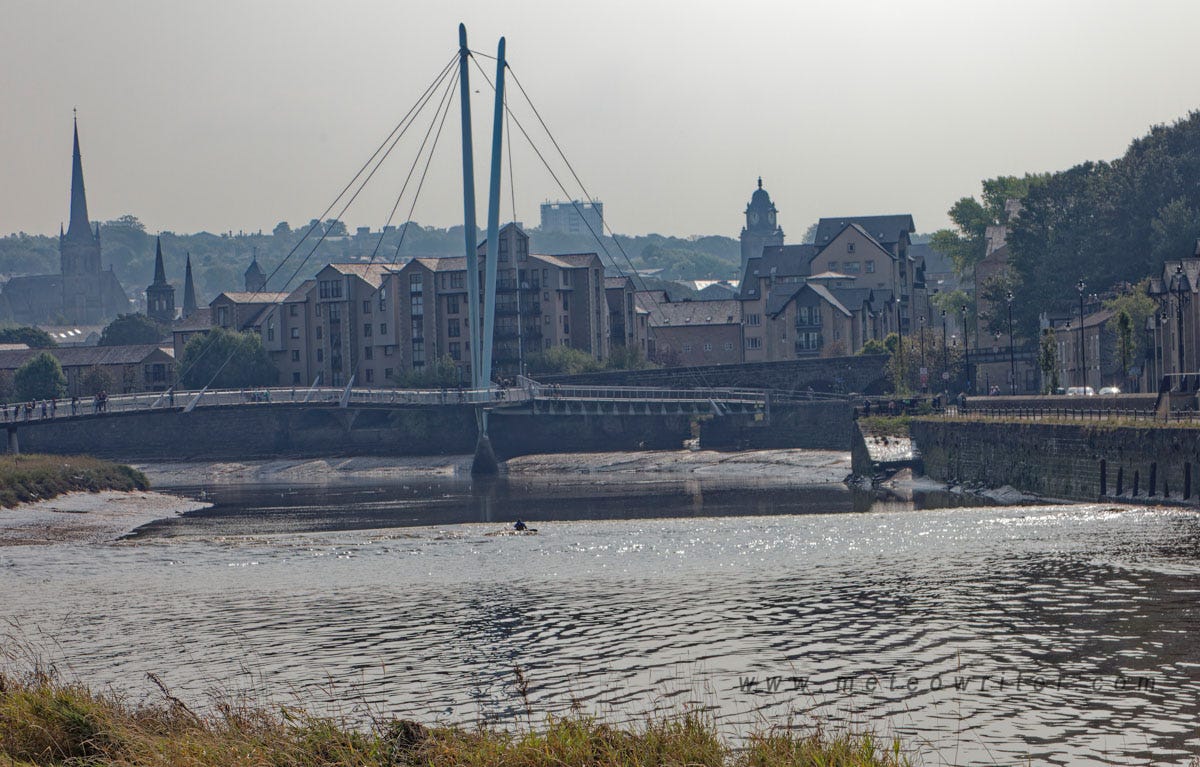Twice a month, the sun, moon and earth align to cause unusually high tides. These are known as spring tides but are sometimes called King Tides in the USA.
The origins of the term ‘spring’ are lost in the mists of time but possibly originate from the German verb springen which amongst other things means to spring or jump or from the idea that the tides ‘spring forth’. The highest tides of the year typically occur in March and September and 12 March last week saw unusually high levels in many places.
Spring tides occur when the gravitational influences of the sun and moon combine, causing the ocean surface to bulge out beneath them. In the open ocean a rise of less than a metre is typical but this effect is amplified by resonance and other factors closer to shore. An equal and opposite bulge occurs on the other side of earth due to centrifugal forces, causing two high tides a day in most places.
In the UK, levels can rise several metres around the coast, sometimes reaching more than 15 metres in the Severn Estuary. This has the second highest tidal range in the world, beaten only in the Bay of Fundy in Canada.
In some estuaries, including the Severn, the rapid change in levels is conducive to the formation of tidal bores. These typically start in the lower parts of an estuary about 1-2 hours before high tide at the coast and take a similar time to progress inland. However, in some places they start much earlier, such as the Lune Tidal Bore which is sometimes spotted near the estuary mouth more than three hours before local high tide.
A very weak tidal bore at the mouth of the Lune Estuary seen from Sunderland Point a few years ago
The timings also vary around the coast and one way to visualise this is that the gravitational pulls of the sun and moon drag the ocean surface along as the earth rotates. Technically this is known as a long-period wave and in the UK first reaches Cornwall before travelling up the west coast to Scotland.
For example, last Tuesday (12 March) the tide peaked at about 6am in Cornwall, just after midday at Liverpool, and an hour later in Dumfries & Galloway. That equates to motorway speeds and I remember reading somewhere that you could follow the peak around the coast if you had a fast car, open roads and no speed limits, although why you would want to do that is another matter …
Tidal bore timings also follow this pattern and on 12 March the Severn Bore made its journey inland between about 8 and 10am while the Arnside Bore in Cumbria wasn’t due to reach the town of Arnside until around midday.
The Severn Bore was predicted to be a rare daytime 5 star event (on a scale of 1* to 5*) and attracted the usual crowds and media attention, and videos posted onto the BBC and ITV websites showed reasonable but not spectacular surfing conditions in the lower estuary. However, the picture from around the rest of the UK was more mixed; for example, with reasonable tidal bores on the Nith at Dumfries and for the Wiggenhall Wave in Norfolk but less good conditions in the Mersey estuary.
For myself, I decided to try to see the Lune Tidal Bore and met up with fellow enthusiast Rob Bridges on the waterside path almost opposite Lancaster Maritime Museum.
It’s one of the UK’s most challenging tidal bores to spot and took me several attempts a few years ago, fitted in around visits to Lancaster University. One problem is that it is unusually sensitive to river conditions and flows turned out to be too high on the day, although were fairly low for the time of year.
The tidal front also arrived earlier than we both expected and the first I knew of it was when Rob pointed down at the water nearby to say that it had arrived! Although a powerful incoming flow soon developed, the small ripples it caused didn’t really count. The photos below are from this trip and an earlier much more successful visit when a mystery kayaker appeared.
So that’s a brief round up of last week’s UK tidal bores and if you’d like to learn more Rob has filmed many of those in northwest England - his Youtube channel is well worth a visit with almost half a million views.
I also give an introduction into why they occur plus viewing tips for seven of the most popular in ‘Spectacular Britain’ and provide a more in depth look in ‘Tidal Bores of England, Scotland and Wales’.
St George’s Quay in Lancaster as the tide came in on 12 March 2024
The Lune Tidal Bore approaching the Millenium Bridge in Lancaster a few years ago









Thanks Jon. That sounds a very civilized way to watch tidal bores. The Golden Ball Hotel at Snatchems is another good place to wait. Chatting to someone there years ago they once had tidal bore themed evening meals and looking just now they must be one of the few pubs in the UK to have a ‘Tide Times’ entry on the home page of their website!
A good read.
I’ve seen the Arnside bore plenty of times but despite having lived in Lancaster for many years, only seen the Lune bore twice. Though one of those was from the window of the Wagon and Horses with a pint of Hartleys in hand. That’s the way to do bore-spotting, I reckon.